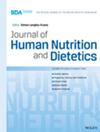Development and Validation of a Scale to Assess Health-Related Quality of Life in Tube-Fed Patients
Abstract
Objectives
This study aimed to develop and validate a questionnaire to assess health-related QOL in tube-fed patients, Zeng's Tube-feeding Index (ZTI).
Methods
Expert consultations, patient interviews, and literature reviews were used to design the draft items. Four rounds of expert and patient review were conducted to refine the items. A preliminary survey was conducted for the dimension division. In 2024, a formal study involving 419 tube-fed patients was conducted to validate the ZTI. The primary diagnoses were haemorrhagic stroke (83, 19.81%), ischaemic stroke (156, 37.23%), traumatic brain injury (70, 16.71%), neurodegenerative diseases (58, 13.84%), head and neck cancer (11, 2.26%), sarcopenia (16, 3.81%), and others (25, 5.97%), respectively. The Cronbach's α coefficient was used to measure internal consistency. Spearman's correlation was used to measure test-retest reliability. The Dysphagia Handicap Index and subjective QOL scores were used to measure the construct validity. Ten independent experts were included to evaluate content validity. Factor analyses were used for structural validity.
Results
The ZTI has four dimensions, with a total of 23 items, using a Likert 4-point scale. The Cronbach's α coefficients were > 0.8 for dimensions and = 0.889 for the scale. The Spearman correlation coefficients were > 0.7 for items or dimensions, and = 0.802 for the scale (p < 0.001). The ZTI showed significant correlations with the Dysphagia Handicap Index and subjective QOL scores in both the total scores and each dimension (|r| > 0.7, p < 0.001). The content validity indices were ≥ 0.8 for items, dimensions, and the scale. The Exploratory Factor Analysis identified four factors that collectively explained > 80% of the variance and built a four-dimensional model. The model showed a good fit through the Confirmatory Factor Analysis.
Conclusions
The ZTI is a validated tool for assessing tube-feeding-related QOL.

 求助内容:
求助内容: 应助结果提醒方式:
应助结果提醒方式:


